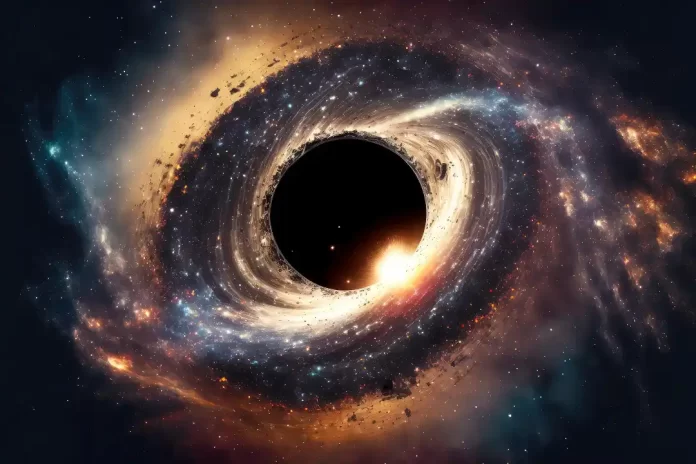There’s a proverb in astronomy that goes something like, “black holes have no hair.” This indicates that black holes are extremely straightforward entities under the framework of general relativity. The only necessary characteristics of a black hole are its mass, electric charge, and spin rate. You now know everything there is to know about black holes just from those three numbers. That is to say, they are bare; they lack any further data.
This feature of black holes has been a major source of frustration for astronomers trying to figure out the inner workings of these cosmic behemoths. However, understanding black holes and their inner workings is impossible due to the absence of any kind of “hair” on their surfaces. Unfortunately, black holes continue to be among the universe’s most elusive and baffling features.
The present knowledge of general relativity, however, is essential to the “no-hair” black hole notion. The emphasis of this relativity illustration is on the curved nature of space-time. Any object with enough mass or energy to bend space-time around it will provide that object directions for movement.
However, this is not the only viable option for building a relativity theory. Space-time’s “twistiness,” as opposed to its curvature, is the subject of a whole distinct method. According to this interpretation, the presence of anything heavy or energetic causes localised distortions in space-time, which in turn direct the motion of nearby objects.
The two techniques, one based on curvature and the other based on twistiness, are mathematically equal. However, Einstein’s earlier development of the curvature-based language has led to its widespread use. There is a lot of possibility for interesting theoretical discoveries that aren’t clear in the curvature method in the twistiness approach, sometimes known as “teleparallel” gravity for its mathematical usage of parallel lines.
A group of theoretical physicists, for instance, has lately investigated how the concept of teleparallel gravity can tackle the “hairiness” of black holes. In July, they released a paper detailing their results on the arXiv preprint database. (The findings haven’t been examined by other scientists.)
Using a scalar field, a quantum phenomenon that exists in all of space and time, the group investigated possible additions to general relativity. The Higgs boson, which gives many particles their masses, is a well-known scalar field. Physicists have long employed scalar fields in attempts to explain the nature of cosmic mysteries like dark matter and dark energy, and it is possible that there are other scalar fields that inhabit the universe and subtly modify how gravity functions.
There is a finite number of ways to include scalar fields into general relativity based on regular curvature. In teleparallel gravity, though, you have a lot more leeway. Using the teleparallel framework, this research group found a technique to include scalar fields into general relativity. Then, scientists applied this method to see if these previously unseen scalar fields manifested themselves in the vicinity of black holes.
When seen via the teleparallel lens, the scalar fields introduced to general relativity end up giving black holes some facial hair.
The presence of a robust scalar field close to a black hole’s event horizon constitutes the “hair” in this context. This scalar field is crucial because it contains information about the black hole that might help scientists learn more about them without having to actually enter them.
Scientists have finally figured out how to give black holes hair, but now they need to address the observable repercussions of their findings. It’s possible that future measurements of gravitational waves will pick up on faint traces of these scalar fields when they manifest in black hole mergers, for instance.
Reference:
Sebastian Bahamonde et. al, Distinctive Features of Hairy Black Holes in Teleparallel Gauss-Bonnet Gravity, DOI: arXiv:2307.14720
